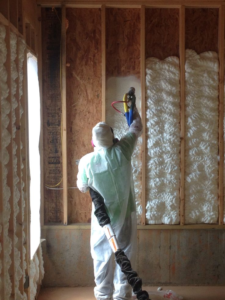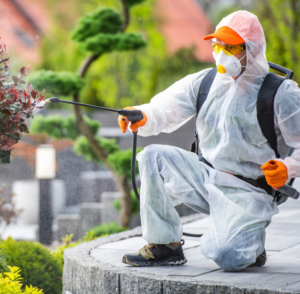The military Humvee, or HMMWV as it is known, began life in the 1970s when the US Army recognized the need to replace its old jeep fleet. It was designed as a jack-of-all-trades light tactical vehicle.
The funny-looking 4×4 has conquered mud, sand, and rock, carried troops and cargo, and even served as a field ambulance. Click Custom Humvee to learn more.

The military Humvee, officially known as the High Mobility Multipurpose Wheeled Vehicle (HMMWV) and commonly referred to as a Hummer, is a light, four-wheel-drive military truck. This vehicle is designed to perform a number of different tasks, and there are many versions and variants. Some of the most common are the M998 and the M1025/M1026, which can be fitted with a variety of weapons systems and can carry up to four personnel.
While the Humvee has served the Armed Forces well, it is starting to be replaced by a new vehicle called the Joint Light Tactical Vehicle (JLTV). The JLTV is built to bridge the gap in balance between protection, maneuverability, and payload for the Army and Marine Corps. The JLTV will have hull designs that optimize survivability against a range of blast and ballistic threats. It will also have better suspension travel and locking differentials.
The new vehicle will also have a more powerful engine and improved technology for communications. It will also be able to connect to the latest battlefield networks. In addition, the JLTV will be more maneuverable than the Humvee and easier to maintain.
The Army and Marines began to deploy the JLTV in January 2021. The first units to receive them were the 1st Armored Brigade Combat Team, 3rd Infantry Division at Fort Drum, NY. The vehicles were paired with the new Joint Multi-role Vehicle, which will serve as a command and control platform for future operations. It will be able to operate in either gas or electric mode, depending on the situation. It will also be able to stop its internal combustion engine cylinders for prolonged periods without degrading functionality or operation.
Powertrain
The Humvee is a light-duty military vehicle with a lot of capability. It can easily take on difficult terrain and go places that other vehicles would struggle to get to. It was originally designed to be a replacement for the old jeeps but is now used in a variety of different roles.
The original HMMWVs were powered by a 6.2 liter Detroit diesel engine. While this engine was pretty solid on the open road, it was not so good when it came to combat duty. Roadside improvised explosive devices and rocket-propelled grenades were just too much for this vehicle.
While the HMMWV was still a great vehicle in some situations, the military has since been moving to more and more armored vehicles. As a result, there is less and less need for the lighter and more nimble vehicles. AM General is now working on a new generation of Humvees that will be more reliable than ever. They are using a geared fan drive, new cool pack and shroud, shock absorbers, A-arm bushings, re-engineered geared hub assembly, parking brakes, and more to make these vehicles the best they can be.
One of the biggest issues with the HMMWV is that it is very slow for an armored vehicle. The Humvee needs to move soldiers and gear quickly, but the stock engine can be pretty underwhelming. That’s why a shop like Banks Power is looking to upgrade the military vehicles.
This shop is known for tuning pickup trucks and SUVs but they’re not afraid to take on a big project. They’ve taken on the challenge of hybridizing a large number of the Army’s Humvees to make them more powerful and fuel efficient. This won’t do away with diesel fuel completely but it will reduce the military’s dependence on fossil fuels.
Transmission
In the world of military vehicles, few are as recognizable as the HMMWV or Humvee. This light four-wheel drive, diesel-powered military vehicle is designed to carry any load the Army or Marine Corps may require and perform in a variety of challenging environments for long periods of time. In addition to being capable of carrying a large number of different equipment platforms, the HMMWV is also able to transport infantry fire teams and other heavy equipment in complete safety.
The HMMWV has a long and varied history with the US military, with over a quarter million of these jack-of-all-trades tactical vehicles built since their introduction in 1984. They have served in every imaginable military conflict and peacekeeping mission, and have been adapted to a wide variety of purposes. The HMMWV is so ubiquitous that it’s even used by non-military organizations for a variety of tasks.
While the HMMWV has been replaced by the Joint Light Tactical Vehicle, the Army and Marine Corps are still using them for many missions. The JLTVs offer better armor, a mine-resistant hull, and a more powerful engine than the Humvee.
Although the JLTVs are superior to the Humvee in most ways, it’s possible that the big bruiser will be relegated to more administrative and logistical duties while the new trucks get all the exciting action. That’s why Miles Fiberglass is on the ready to provide a full range of Humvee maintenance services to keep these iconic vehicles rolling.
Miles can upgrade your Humvee’s transmission to improve its power and performance, or we can provide a suspension system that makes these vehicles more nimble and enjoyable to drive on rocky terrain. We work with Gale Banks, who knows how to make a truck work in the desert, having competed in the Baja 1000 in a Banks-powered F-250. We can also help you with a variety of other military vehicle maintenance issues, as we are dedicated to the preservation of these legendary machines.
Armor
A Military Humvee comes unarmored from the factory to save weight and allow it to be air dropped into combat zones. It is then upfitted by the Army with armor and equipment. The process starts by using a high-precision structured light 3D scanner to create a model of the vehicle’s surface geometry. Then, CNC-controlled machining centers mill and drill materials to form the armor and other components of the vehicle. Then, the installers weld and bond the armor to the HMMWV body. The resulting rig is much more survivable than a standard soft-skinned vehicle.
During the Iraq War, the need to protect the occupants of the HMMWV became critical. The Army responded by accelerating the delivery of highly-protected up-armored vehicles, while troops in the field implemented improvised near-term solutions adding some protection levels to the vulnerable trucks.
As a stop-gap, Aberdeen developed the Armor Survivability Kit (ASK). ASK kits were installed on existing HMMWVs by teams that removed the doors and some side armor and replaced them with the new armor. This increased the vehicle’s armor level and decreased its vulnerability to RPG and IED attacks, but it still left the HMMWV vulnerable to direct fire from close range.
The Army’s armor program eventually evolved around a package of add-on armor that added about 2,000 pounds to the base vehicle, giving it far more protection than a standard Humvee. In addition, the Army started to use a new type of cab that was more spacious and comfortable for soldiers riding inside. The combination of these changes allowed the HMMWV to become the backbone of the US military’s tactical vehicles. The Humvee is now being replaced in some units with the Joint Light Tactical Vehicle (JLTV). The JLTV has a higher level of protection, a larger cabin, and a more powerful engine.
Storage
If you’re a military service member and need somewhere to store your vehicle while moving to a new base or before leaving for deployment, storage facilities with dedicated vehicles storage spaces are the way to go. These facilities offer a variety of storage options, from drive-up units for cars and motorcycles to large covered or uncovered parking spaces that are perfect for military vehicles, trailers, and more. They also offer flexible terms, including month-to-month rental, so you can move in and out when it’s convenient for your schedule.
A Humvee can be configured in a variety of ways to suit the needs of each mission, from open-topped scout vehicles and armored personnel carriers to ambulances and TOW missile launchers. It’s a highly versatile vehicle with a no-nonsense design that has proven itself in the field time and time again. The HMMWV is capable of traversing a 60% slope, climbing over water and navigating through dense brush with ease. It’s a true workhorse for the Army.
Since its debut in the late 1980s, the HMMWV has evolved through a series of upgrades and improvements. The latest upgrade, HMMWV XM17, is designed to address safety concerns that arose from recent rollover accidents and to add further protection capabilities. The XM17 is expected to be fielded in 2022.
In addition to these improvements, the XM17 is designed for easier maintenance and repair, which will be key as the Army continues to retire older models in favor of the new Joint Light Tactical Vehicle. The XM17 will feature a geared fan drive, new cool pack and shroud, updated parking brakes, a re-engineered geared hub assembly and more. It’s a major improvement for the Army and will serve them well for years to come.








